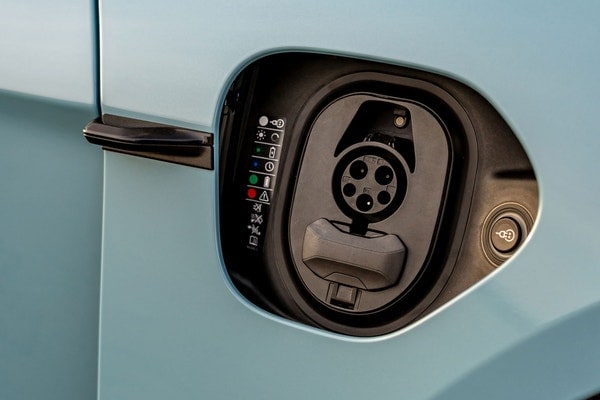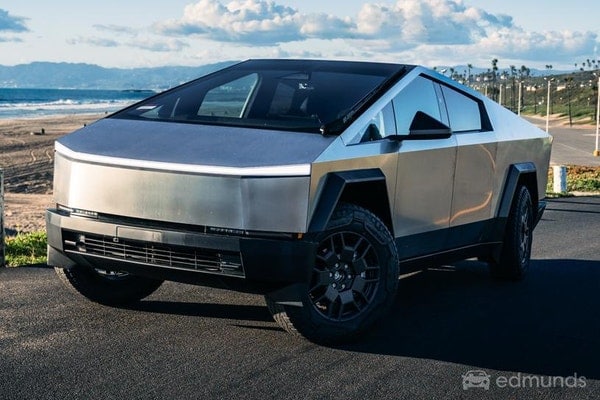Used 2013 Tesla Model S Base Sedan Review
Consumer reviews
Read what other owners think about the 2013 Tesla Model S Base Sedan.
Most helpful consumer reviews
Best car I've ever owned, could never go back
John Sanders, Phoenix, AZ, 11/06/2015
2013 Tesla Model S 4dr Sedan (electric DD)
I like to drive cars hard, but hated sticking $70 in the pump every week. I drive a lot and hate driving hybrids with CVTs. So when I could get an all electric performance car I took the plunge. I usually prefer coupes to sedans, but since Tesla no longer made the Roadster, I went with the Model S. I couldn't be happier. The service is excellent, especially compared with my wife's … Lexus. If there's ever a problem, Tesla sends a valet out to get my car, leaves me a brand new loaner, fixes and washes it, and then brings it back to my house, all for free. The car is big, but it still gets close to double Prius efficiency, all while I drive it as fast as I want. Charging at home is also very convenient compared to stopping for gas. The only drawback for me is it is slightly more prone to interior rattles than my past vehicles. This could be because it doesn't make any engine noise, but overall it's still much quieter.
Great drivetrai + beta software
evdriver1, Carnation, WA, 10/21/2014
2013 Tesla Model S 4dr Sedan (electric DD)
I own 2013 model 85 that has 17k miles on it. Great drivetrain, power and handling. Interior is good but not on par with Germans. Quality of materials and assembly probably like Volvo. 2014 models may be better. Fortunately Tesla have been fixing squeks, creaks and leaks. Drive unit developed whine, replaced. Sunroof seals replaced. Glovebox stuck, replaced. Software is hit and miss, … feels like perpetual beta. Service center is useless if issue is in software. 4.x was OK. 5.0 - garage opener started to work every other time. Some next version fixed it. 5.11 randomly rebooted. 5.12 seemed stable. 6.0 added calendar which doesnt sync with iphone 6. Make sure you read forums and blog comments.
UPD: Sold at 30K. Did not buy another. Will wait some until software stabilizes. Don't feel like paying $100K to be a tester.
Tesla Battery Failed after only 43,000 miles!
Ro, Sunnyvale, CA, 01/18/2022
2013 Tesla Model S 4dr Sedan (electric DD)
After only 43,000 miles my Tesla Model S battery began to fail. A full charge dropped from about 235 miles to a mere 100 miles. The Tesla experts informed me that the battery would completely fail very soon or months down the road and I could be stranded. They wanted to charge me $22,000 for a new battery, which they would install in a few months or so. I was furious and hugely … disappointed.
Counting tax, registration etc., I paid $98,000 in 2013 for this new Model S Tesla. That the car essentially quit after 43,000 miles and 8 years leads me to regret every buying it.
I begged a Tesla manager to charge less or nothing at all for a new battery since the warranty was up about 5 months prior and the Tesla had only 43,000 miles. The Tesla manger refused. I told him that I thought, given the money I paid, that Tesla would consider finding a good solution for the sake of customer satisfaction. The employee hardly even responded to my request. His communicated: You are just out of luck and Tesla policy is not going to help you.
The Tesla service manager said that he knew of other Tesla’s with failed batteries so mine was not an unexpected event.
I will NEVER buy another Tesla. Those cars are expensive, yet their batteries may fail within or just after 8 years. Previously I purchased non-Tesla cars that lasted 110,000 to 150,000 miles. Not my Tesla – only 43,000 miles.
The environmental impact of Tesla cars includes all the effort to mine lithium plus other unattractive environmental effects to produce the massive battery. Now my battery may end up in the landfill. Tesla said they have no rebuilt batteries. So the environmental impact is not simple.
Great Car - Wish I could afford a second!
josh_b, 07/24/2013
2013 Tesla Model S 4dr Sedan (electric DD)
Hi everyone,
Like you I was skeptical at first that an EV could be as enjoyable to drive as one with an ICE and as green as described.
I can now say that after 14,000 trouble free kilometeres and no issues, my 'S has been all of the above and more. I have hauled four people and their equipment around all day, driven all over southern Ontario without issue or anxiety and saved countless … tanks of gas from being burned. (I drive a lot.)
It's great to see technology, but moreso great to see technology implemented smartly. (Not just for its own sake.)
The car is reliable and a joy to drive!
Edmunds Summary Review of the 2013 Tesla Model S Base Sedan
Pros & Cons
- Pro:Acceptable to excellent battery range
- Pro:sleek styling
- Pro:impressive performance from all models
- Pro:lots of cargo space
- Pro:available seven-passenger configuration
- Pro:supported by Tesla's supercharger infrastructure.
- Con:Unknown reliability
- Con:lacks the convenience and familiarity of similarly priced luxury sedans.
Full Edmunds Review: 2013 Tesla Model S Sedan
Edmunds Insurance Estimator
The Edmunds TCO® estimated monthly insurance payment for a 2013 Tesla Model S in Ohio is:
not availableLegal



